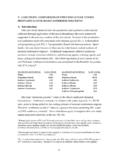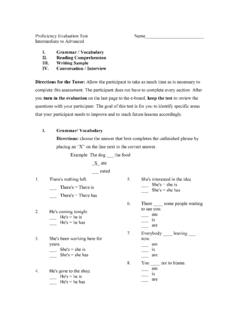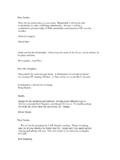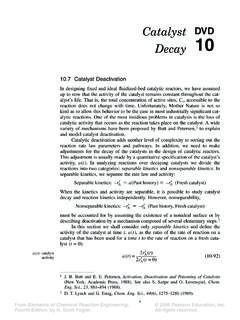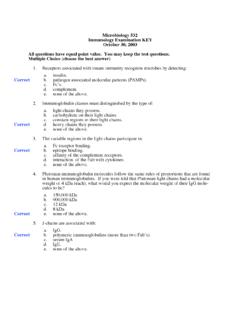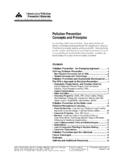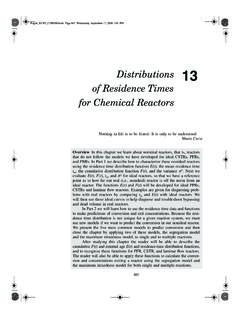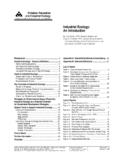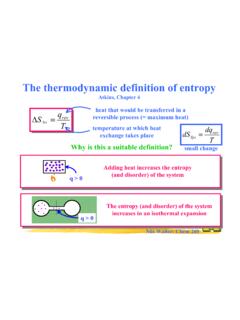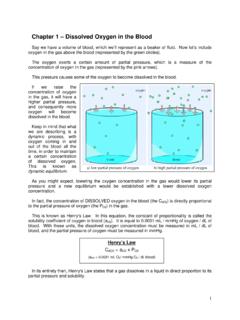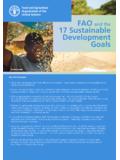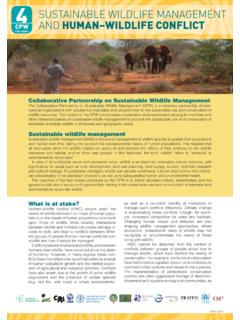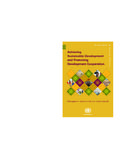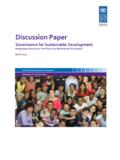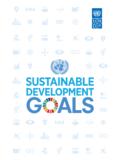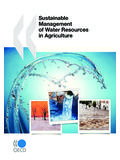Transcription of Sustainable Architecture Module: Qualities, Use, and ...
1 Qualities, Use, and ExamplesDecember 1998 Sustainable Building Materials 1 Sustainable Architecture Module: Qualities, Use,and Examplesof SustainableBuilding MaterialsWritten byJong-Jin Kim, Assistant Professor of Architecture ,and Brenda Rigdon, Project Intern;Edited byJonathan Graves, Project Intern;College of Architecture and Urban PlanningThe University of MichiganPublished byNational Pollution Prevention Center for Higher Education,430 E. University Ave., Ann Arbor, MI fax: ~nppcpub/This compendium was made possible in part by a grant from the 3 MCorporation. These materials may be freely copied for educational Sustainable Building MaterialsDecember 1998 Qualities, Use, and ExamplesQualities, Use, and ExamplesDecember 1998 Sustainable Building Materials 3 ContentsList of Cycle Phases of Building Materials:Pre-Building of Sustainable Building MaterialsPollution Prevention Measures in Reduction Measures in Energy of Natural of Construction Treatment and of Non-Toxic or Less-Toxic Energy Buliding Materials and and Sustainable Building MaterialsDecember 1998 Qualities, Use, and ExamplesSelecting Sustainable Building Phase: Energy of Natural Phase: in Construction of Non-Toxic or Less-Toxic Energy Phase.
2 And , Use, and ExamplesDecember 1998 Sustainable Building Materials 5 List of FiguresFigure 1 Three phases of the building material life 2 Embodied energy content ofcommon building to green features of building 4 Green features of plastic lumber and 5 Porous pavement system made 6 Green features of recycled 7 Prefabricated drainage system usingEPS chips instead of 8 Green features of insulated 9 Permanent formwork for poured concretemade from rigid plastic 10 Concrete blocks with foam 11 Green features of steel 12 Wood and steel open-web 13 Composite lumber made from waste 14 Green features of straw-based 15 Green features of fiber-chemical 16 Green features of bricks and 17 Structural building 18 Green features of recycled
3 Sustainable Building MaterialsDecember 1998 Qualities, Use, and ExamplesFigure 19 Insulation made from recycled 20 Double-paned glass with films formingadditional airspaces and UV 21 Openable skylights provide daylightingand natural 22 Integrated sheathing and insulation,pre-tapered for flat 23 Fiber-resin composition roofing tiles castfrom 100-year-old slates for an authentic 24 Shingles made from recycled 25 Access flooring allows electricalconfigurations to be easily changedwhen the building s use 26 Some [access flooring] systems haveintegrated ventilation 27 Vacuum toilet 28 Heat and moisture exchange disk in aheat recovery , Use, and ExamplesDecember 1998 Sustainable Building Materials 7 IntroductionCareful selection of environmentally Sustainable buildingmaterials is the easiest way for architects to begin incorporatingsustainable design principles in buildings.
4 Traditionally,price has been the foremost consideration when comparingsimilar materials or materials designated for the same , the off-the-shelf price of a building componentrepresents only the manufacturing and transportation costs,not social or environmental Cycle DesignA cradle-to-grave analysis of building products, from thegathering of raw materials to their ultimate disposal, providesa better understanding of the long-term costs of costs are paid not only by the client, but also by theowner, the occupants, and the principles of Life Cycle Design provide important guide-lines for the selection of building materials. Each step of themanufacturing process, from gathering raw materials, manu-facturing, distribution, and installation, to ultimate reuse ordisposal, is examined for its environmental material s life cycle can be organized into three phases:Pre-Building; Building; and Post-Building.
5 These stagesparallel the life cycle phases of the building itself (see thiscompendium s Sustainable Building Design module). Theevaluation of building materials environmental impact ateach stage allows for a cost-benefit analysis over the lifetimeof a building, rather than simply an accounting of initialconstruction Phases of Building MaterialsThese three life-cycle phases relate to the flow of materialsthrough the life of the building (see Figure 1).Pre-Building PhaseThe Pre-Building Phase describes the production and deliveryprocess of a material up to, but not including, the point ofinstallation. This includes discovering raw materials innature as well as extracting, manufacturing, packaging, and8 Sustainable Building MaterialsDecember 1998 Qualities, Use, and Examplestransportation to a building site.
6 This phase has the mostpotential for causing environmental damage. Understandingthe environmental impacts in the pre-building phase will leadto the wise selection of building materials. Raw materialprocurement methods, the manufacturing process itself, andthe distance from the manufacturing location to the buildingsite all have environmental consequences. An awareness ofthe origins of building materials is crucial to an understandingof their collective environmental impact when expressed inthe form of a basic ingredients for building products, whether forconcrete walls or roofing membranes, are obtained by mining orharvesting natural resources. The extraction of raw materials,whether from renewable or finite sources, is in itself a sourceof severe ecological damage.
7 The results of clear-cuttingforests and strip-mining once-pristine landscapes have beenwell refers to the extraction, often with great difficulty, ofmetals and stone from the earth s crust. These materials existin finite quantities, and are not considered renewable. Therefining of metals often requires a large volume of rock toyield a relatively small quantity of ore, which further reducesto an even smaller quantity of finished product. Each step inthe refining process produces a large amount of toxic theory, harvestable materials like wood are renewableresources and thus can be obtained with less devastation toFigure 1: Three phases of thebuilding material life Extraction Construction Recycling Processing Installation Reuse Packaging Operation Shipping MaintenanceWasteRecycleReuseQualities, Use, and ExamplesDecember 1998 Sustainable Building Materials 9their ecosystems.
8 In reality, a material is only considered arenewable or Sustainable resource if it can be grown at a ratethat meets or exceeds the rate of human consumption. Hard-woods, for example, can take up to 80 years to ecological damage related to the gathering of naturalresources and their conversion into building materials includesloss of wildlife habitat, erosion, and water and air of habitat: Habitat refers to the natural environment inwhich a species is found; usually, these areas are forests for lumber or removing vegetation for miningdestroys the habitats of animal and plant species. A microcli-mate may be immediately and severely altered by the removalof a single tree that protectively shaded the plants wilderness declines, competition for food, water, andbreeding territory increases.
9 Some species, like Michigan sKirtland s Warbler, are so highly specialized that they canonly thrive in a specific, rare ecology. Damage to these specialecosystems leads to extinction. A record number of speciesdisappear every year due to loss of habitat. All consequencesof this loss are yet unknown, but many biologists believe thatsuch a severe reduction in diversity threatens the long-termadaptability, and thus survival, of plants, animals, and return moisture to the air through respiration, filterwater and air pollutants, and generate the oxygen necessaryfor people and animals to survive. Tropical rainforests are amain route for the movement of water from the ground intothe atmosphere: trees, like people, expel moisture as part oftheir respiration cycle.
10 A decrease in the amount of atmo-spheric water may lead to a decrease in worldwide rainfall,resulting in drought and rainforests support a vast range of plants and part of the photosynthesis process, they also absorb carbondioxide from the atmosphere. The widespread destruction ofrainforests to make way for mining and farming operationshas been linked to increased levels of carbon dioxide in theatmosphere, which in turn has been linked to global Sustainable Building MaterialsDecember 1998 Qualities, Use, and ExamplesErosion: The removal of trees and groundcover also leavesareas vulnerable to erosion. The erosion of topsoil and runoffinto streams and rivers has become a major environmentalconcern. Active surface mining accounts for the erosion of48,000 tons of topsoil, per square mile mined, per Inaddition to depleting the area of fertile soil, the particulatematter suspended in water reduces the amount of sunlightthat penetrates to plants below the surface.
